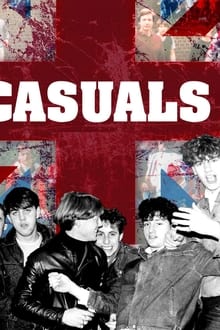
In the Cold War years of the 1970s, an American patrol boat meets a Soviet ship off the east coast of the United States for talks about fishing rights in the Atlantic. In the midst of this, while Russian commanders are aboard the U.S. Coast Guard vessel where the talks are being held, a Lithuanian sailor jumps across the ten feet of icy water separating the boats. Crash-landing on the deck of the American ship, he desperately begs for asylum. Though they try, the Americans ultimately fail to provide protection and the Soviets are allowed to capture him and brutally return him to their vessel. Thus begins a stranger-than-fiction story of imprisonment, discovery, fame, and freedom. Through rare archival footage and a dramatic first-person re-enactment of that fateful day by Simas Kudirka, the would-be defector himself, this tale of one of the biggest Cold War muddles takes us on a journey of uncanny twists of fate, and the emotional sacrifices of becoming a universal symbol of freedom.
You May Also Like

In a hostile time for Asian Americans, the revisiting of an unlikely athlete’s story 10 years later gives hope and shatters stereotypes on sport’s biggest stage.

Marwan Barghouti, often described as the ‘Palestinian Nelson Mandela’, is serving five life sentences in an Israeli prison. This is his story.


Kathryn Joy was three months old when their father killed their mother. He served just 22 months and by age four, Kathryn was back living with him in the house he killed their mother in with little knowledge of what happened to her. Spanning over forty years, Revealed: KillJoy follows Kathryn from a child into adulthood as they embark on a journey to uncover their mother’s buried story.

10 number one hits. More than 2 billion streams. Yet rap superstar Apache 207 is a mystery. Now he breaks his silence and grants access to camera crews. This compelling documentary shows his life, from plattenbau to luxury mansions, from loneliness to sold-out stadiums – accompanied by his family, best friends and rap icons Loredana, BAUSA and XATAR.

Profile of the producer and former studio head of 20th Century Fox in the 1970s, Alan Ladd Jr.

Ten women in Canada talk about being lesbian in the 1940s, 1950s, and 1960s: discovering the pulp fiction of the day about women in love, their own first affairs, the pain of breaking up, frequenting gay bars, facing police raids, men’s responses, and the etiquette of butch and femme roles. Interspersed among the interviews and archival footage are four dramatized chapters from a pulp novel, “Forbidden Love”.

Industry insiders, retail experts and former employees reveal the secrets of the the world’s biggest furniture seller, IKEA.

A deep dive into the world of the thriving board game industry and the creators behind popular games.

In 1960, United Nations: the Global South ignites a political earthquake, musicians Abbey Lincoln and Max Roach crash the Security Council, Nikita Khrushchev bangs his shoe denouncing America’s color bar, while the U.S. dispatches jazz ambassador Louis Armstrong to the Congo to deflect attention from its first African post-colonial coup.

Follow KROW’s 3-year transition from teen ‘female’ model to becoming his true authentic self, not just as a transgender male, but also becoming an androgynous male model.

Some thirty years ago, a working-class subculture was taking grip of cities across the UK that has left a lasting legacy. This began on the back of the mod revival of the late 1970s when notorious football firms from the cities like Liverpool, Manchester and London stole expensive designer sportswear from the countries they visited. It didn’t start with the high-street giants telling these lads what to wear. Instead, they set the trends and the high-street stores caught up. As the 1980s began in Britain, under the radar the ‘casual’ had already arrived. From Barcelona to Berlin, Milan to Moscow, teenagers today are copying fashions and a culture that developed on the streets and terraces of British cities. But how did the football casual subculture come about? What did they stand for? What made them tick? Why it’s legacy is still having an impact on today’s fashion industry.